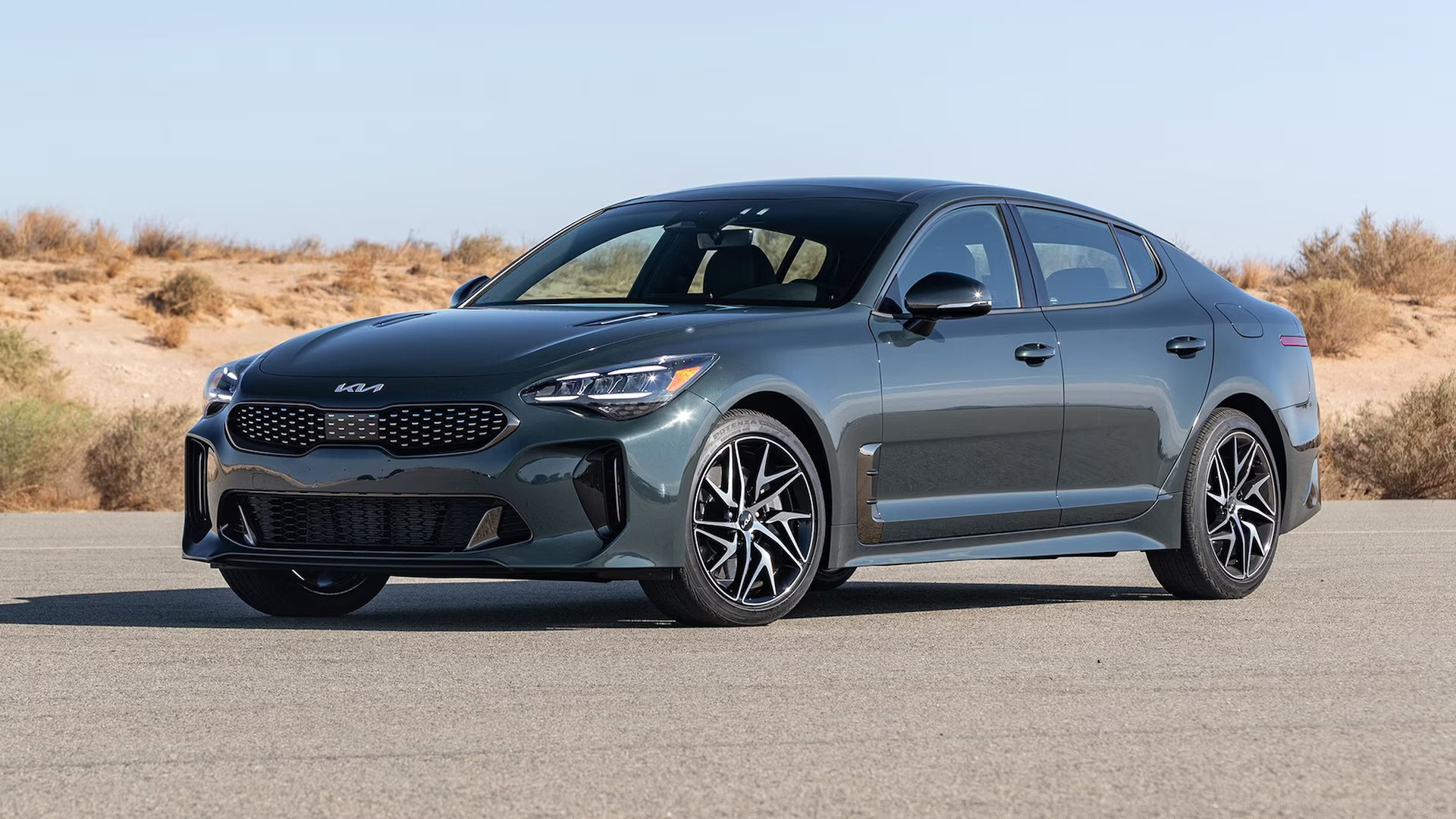Kia’s journey from an underdog in the automotive world to a competitive global force has been nothing short of remarkable. In the early 2000s, few car buyers would have predicted that the South Korean automaker would one day challenge long-standing brands like Honda, Toyota, and Ford in terms of design, performance, and—most surprisingly—reliability.
Once mocked for budget models with questionable durability, Kia has since invested heavily in engineering, design innovation, and manufacturing processes. This transformation has led to a number of standout vehicles that don’t just look the part but stand the test of time. However, not all of Kia’s vehicles have aged as gracefully as others. For every model that has exceeded expectations, there are still those that lag behind, struggling with the very issues Kia worked so hard to shake off.
As with any automaker, Kia’s evolution has included its fair share of missteps. Some early models were built quickly to meet demand or fill gaps in the lineup, and in doing so, they compromised long-term quality. Others suffered from first-generation teething problems or were released at a time when Kia hadn’t yet refined its production standards.
These vehicles serve as reminders that while a brand may strive toward excellence, growing pains are inevitable. On the other hand, more recent releases—particularly those from the late 2010s onward—have demonstrated an astonishing leap in build quality, mechanical soundness, and dependability. These success stories are not just surprising; they’re game-changing.
In this comprehensive look at Kia’s lineup, we break down five Kia models that have pleasantly surprised both critics and consumers with their reliability, vehicles that not only held up over time but also reshaped public perception of the brand.
These models have proven to be low-maintenance, well-engineered, and consistently solid across years of ownership. They’ve helped Kia move beyond its “economy brand” roots and into the realm of respectability, often rivaling or even surpassing traditional reliability leaders.
On the flip side, we also examine five Kia models that still struggle with reliability, despite the brand’s progress. These vehicles continue to wrestle with issues like premature wear, drivetrain inconsistencies, poor interior durability, and electrical problems that can sap owners’ confidence.
Some were built during Kia’s transition period, where improvements were uneven and quality control wasn’t quite there yet. Others were missteps that failed to live up to their promises, offering style or value at the expense of long-term ownership satisfaction.
This article aims to provide a balanced and detailed look at both ends of the spectrum. Whether you’re a potential buyer weighing the pros and cons of a used Kia or simply interested in how far the brand has come, understanding which models shine and which ones stumble is key. Kia’s reputation has come a long way, but not all Kias are created equal. Let’s take a deeper dive into the models that elevated the brand and those that continue to hold it back.
Also Read: 5 Cars That Gain Value Over Time and 5 That Plummet Like a Rock
5 Kias That Surprised Everyone with Reliability
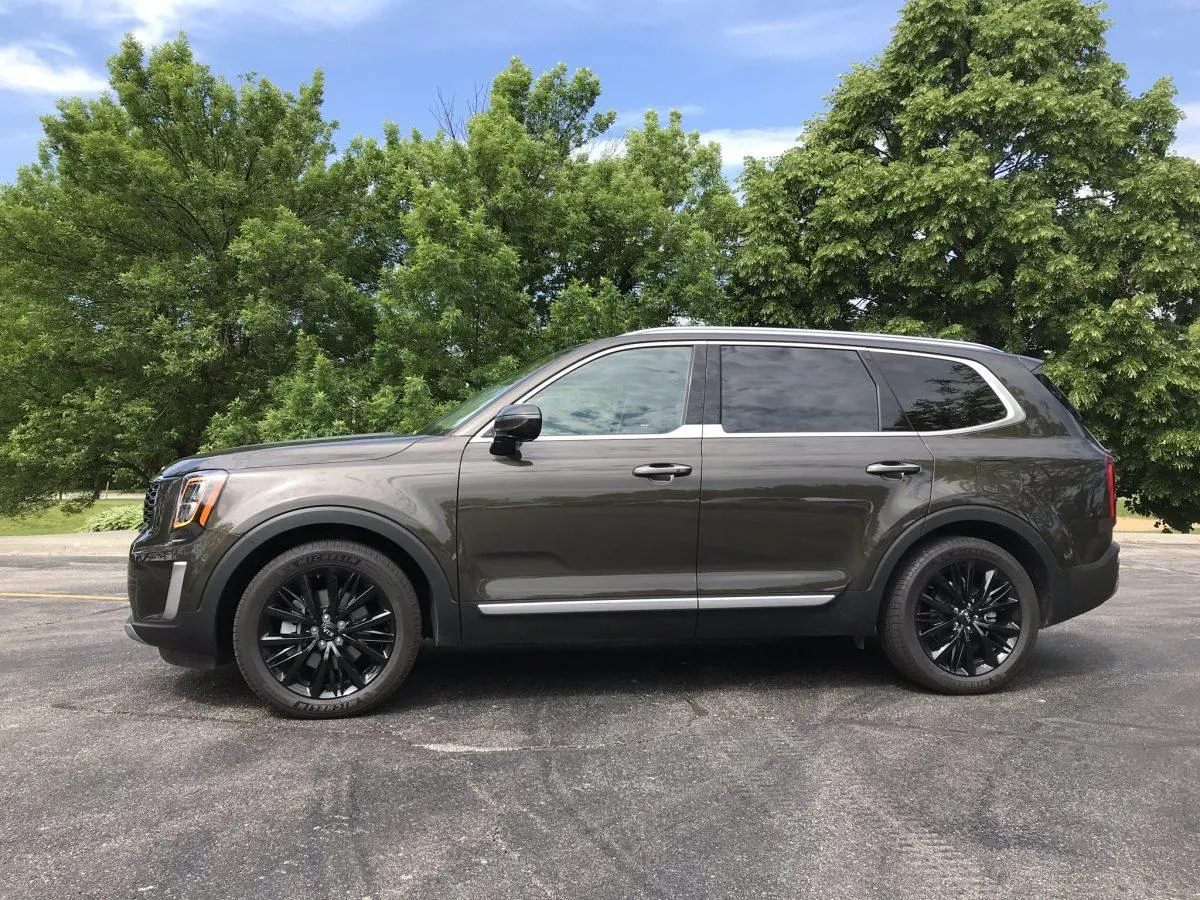
1. Kia Telluride (2019–Present)
When the Kia Telluride debuted in 2019, few expected it to dominate the midsize SUV segment so decisively. Critics and consumers alike initially viewed the model with curiosity, intrigued by its upscale looks and loaded feature set, but skeptical about its long-term reliability.
However, as time passed and the miles accumulated, the Telluride proved to be more than just a well-designed new entrant—it turned out to be one of the most robust and trouble-free midsize SUVs in its class.
Its 3.8-liter V6 engine has demonstrated strong durability, with minimal complaints related to engine performance, overheating, or oil consumption. The eight-speed automatic transmission, too, has remained smooth and dependable, rarely showing the jerky shifts or failures that plague rival SUVs.
The Telluride’s chassis and suspension system add further confidence to its reliability credentials. Built with a focus on strength and stability, the SUV handles daily commutes, long road trips, and rougher terrain with ease. The suspension components—including shocks, struts, and bushings—have held up impressively well, even under frequent use or when the vehicle is loaded to capacity.
Moreover, Kia invested heavily in insulating the cabin from road noise and vibration, and what’s more surprising is how these sound-dampening materials and construction techniques have stood the test of time. Even Tellurides with over 100,000 miles retain a quiet, composed ride with few interior creaks or rattles—a quality often reserved for more expensive luxury vehicles.
Perhaps the most striking aspect of Telluride’s reliability story is how consistently high its owner satisfaction remains. Across independent surveys and consumer reports, Telluride owners report minimal service issues, high build quality, and very few warranty claims.
The strong residual values and resale demand also reflect its reputation for durability. Many skeptics expected Kia’s flagship SUV to suffer the same growing pains as other first-generation models, but the Telluride has become a benchmark of excellence. It’s not just a win for Kia; it’s a testament to how far the brand has come in terms of quality control and engineering refinement.

2. Kia Soul (2010–Present)
Few vehicles have managed to reinvent themselves and maintain popularity across generations quite like the Kia Soul. From its boxy, youth-focused debut in 2010 to the more refined and tech-savvy versions of today, the Soul has continuously evolved while remaining surprisingly reliable.
The early expectations for the Soul were modest—after all, it was an economy car aimed at a niche market—but it defied those expectations by offering long-term durability that rivaled even Japanese stalwarts in the segment. The powertrains, especially the naturally aspirated 1.6-liter and 2.0-liter engines, have proven themselves to be low-maintenance and capable of lasting well beyond the 150,000-mile mark with only routine servicing.
Equally impressive is the Soul’s resilience in terms of build quality. Despite its relatively low starting price, the materials used in the cabin hold up better than one might assume. Seats resist wear, plastic panels stay intact and free of cracks, and most models avoid the interior rattles that often plague compact vehicles after a few years.
This kind of durability makes the Soul an appealing choice for buyers who want a reliable, low-cost vehicle that doesn’t feel cheap after three or four years of ownership. Even more surprising is that the vehicle’s quirky styling hasn’t translated into impracticality—its upright design helps provide excellent visibility and cargo room, which contributes to the usability and long-term owner satisfaction.
Mechanically, the Soul’s reliability has remained consistent across generations. Later models have even improved on fuel efficiency and emissions while retaining the same rugged simplicity that made earlier versions so dependable. Suspension parts and braking systems are easy and affordable to maintain, and the Soul rarely suffers from major electronic failures, which is a common issue in budget vehicles.
For a car that many initially wrote off as a novelty, the Kia Soul has carved out a reputation as one of the most dependable and functional hatchbacks on the market today, earning its place as one of Kia’s greatest reliability surprises.
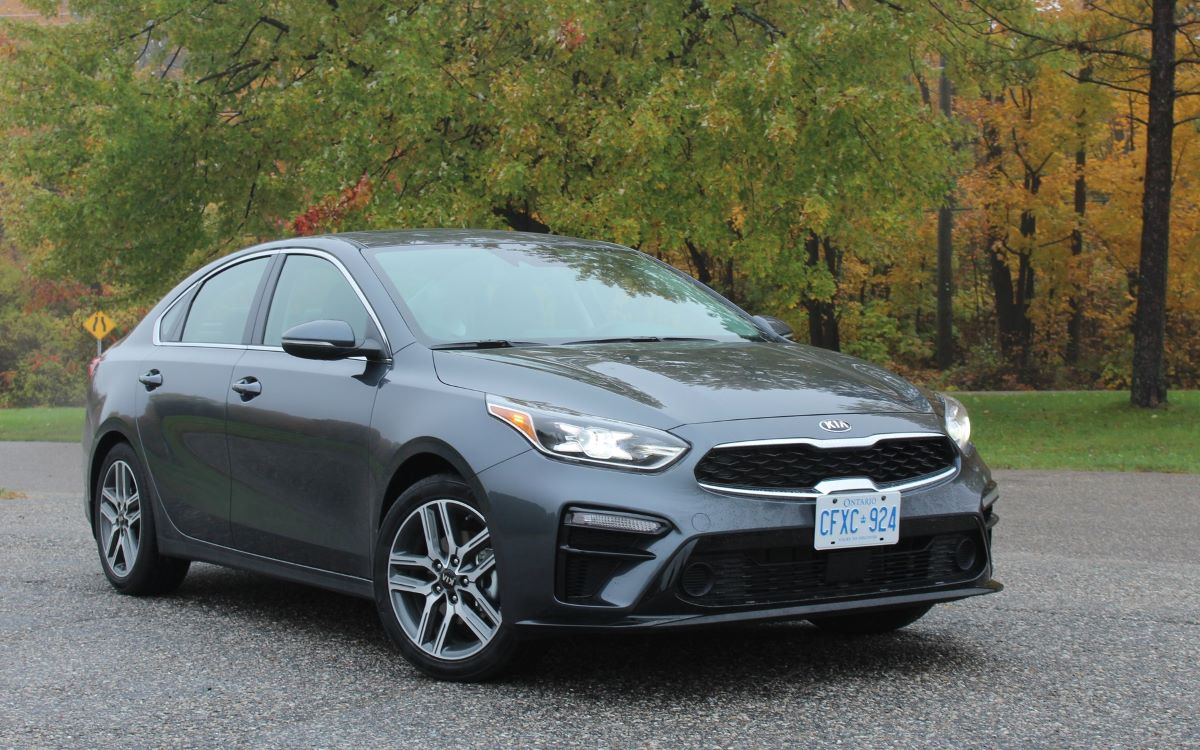
3. Kia Forte (2017–Present)
The Kia Forte’s rise in reliability rankings has been nothing short of remarkable. While earlier versions of this compact sedan were met with mixed reviews due to fit-and-finish concerns and some drivetrain quirks, Kia’s redesign and mechanical overhaul starting around 2017 turned the Forte into a hidden gem for long-term dependability.
The updated 2.0-liter MPI engine and the continuously variable transmission (CVT) in newer models are both robust and easy to maintain. These powertrains are designed with fewer moving parts and simplified service procedures, which contribute to fewer breakdowns and lower repair costs. Unlike some competitors’ CVTs, which often face issues with belt slippage or overheating, Kia’s Intelligent Variable Transmission (IVT) has proven durable and smooth even under extended use.
Where the Forte really surprises, however, is in its quality consistency. Build quality has vastly improved, especially in models produced from 2019 onward. The body structure feels solid and planted, with minimal chassis flex and an impressive resistance to the road noise and vibrations that typically plague compact sedans.
Doors close with a reassuring thud, interior panels stay tightly secured, and the climate control and infotainment systems have held up reliably in both hot and cold climates. This type of resilience isn’t just surface-level—it’s baked into the car’s structural design and assembly process.
Moreover, Kia has made continuous updates to the Forte without sacrificing reliability. Infotainment technology, advanced driver-assistance systems, and comfort features have been introduced with minimal disruption to the car’s core mechanical reliability.
This integration of technology with reliability is no small feat and speaks volumes about Kia’s commitment to refining even its most budget-friendly offerings. For a compact car that was once considered a step below the Hondas and Toyotas of the world, the Forte’s evolution into a reliable, stylish, and well-equipped sedan is both unexpected and commendable.
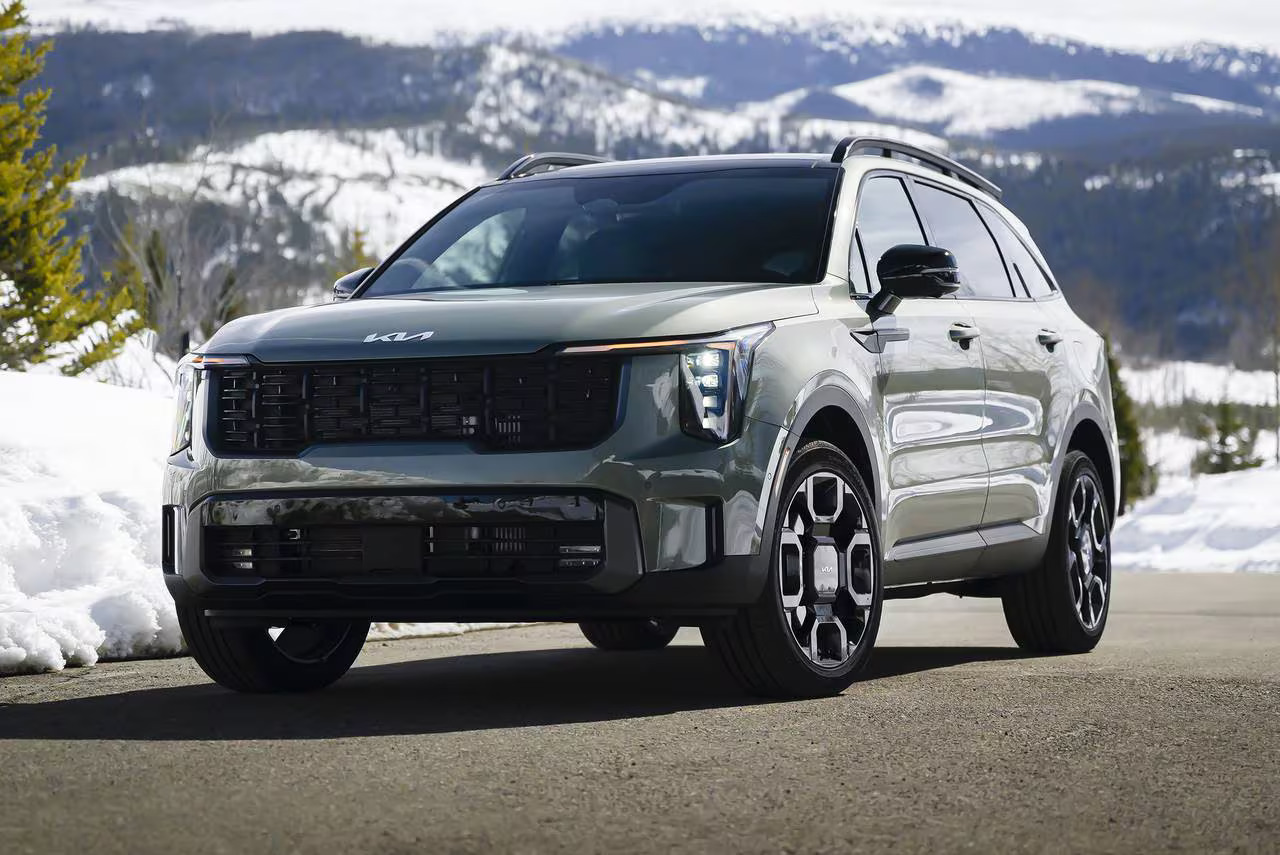
4. Kia Sorento (2016–Present)
The Sorento is another Kia model that has quietly built a name for itself in reliability circles. While previous generations of this midsize SUV were adequate but uninspired, the 2016 redesign brought with it a host of mechanical and structural improvements that drastically enhanced long-term durability.
The engine lineup, which includes the naturally aspirated 2.4-liter and the more powerful 3.3-liter V6, has proven remarkably trouble-free. These engines, when paired with Kia’s six-speed and later eight-speed automatic transmissions, offer consistent performance and minimal mechanical hiccups, even after 100,000 miles.
One of the more underrated aspects of the Sorento’s reliability is its interior construction. Kia took major strides to reduce noise, vibration, and harshness (NVH), and those efforts pay off as the vehicle ages. The dashboard remains tightly secured, electronic components stay functional with minimal issues, and the seating materials resist wear even with frequent use by families.
Moreover, Kia improved the underbody protection and corrosion resistance in this generation, addressing a common issue with previous models that struggled in cold-weather regions.
What also contributes to the Sorento’s dependability is its relative simplicity compared to many of its rivals. While it offers modern technology, the core mechanical systems avoid unnecessary complexity. There are no turbocharged engines or overly sophisticated transmissions in base and mid-level trims, which translates to fewer things that can go wrong over time.
Add in Kia’s 10-year/100,000-mile powertrain warranty and the Sorento becomes a midsize SUV that many didn’t expect to last as long or perform as consistently as it does—yet it continues to prove critics wrong.
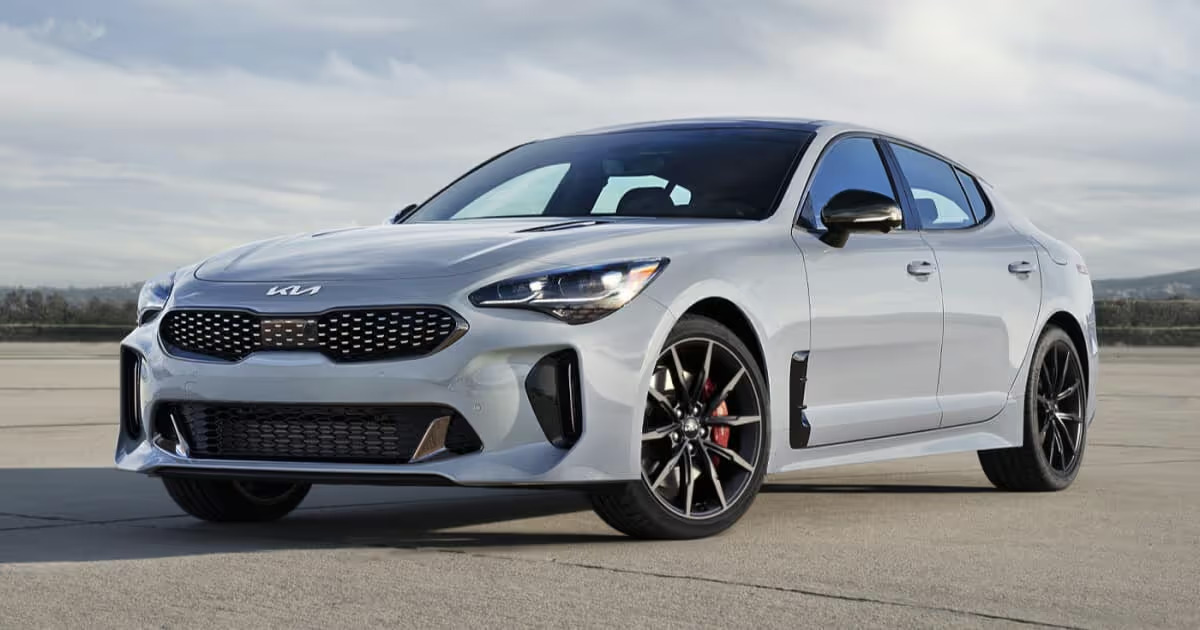
5. Kia Stinger (2017–Present)
When Kia announced the Stinger—a rear-wheel-drive, performance-oriented sport sedan with luxury aspirations—skepticism was rampant. Could Kia, historically known for economy cars, really deliver a reliable alternative to German stalwarts like the BMW 3 Series or Audi A5? As it turns out, not only did the Stinger impress in performance and styling, but it also emerged as an unexpectedly reliable machine.
The twin-turbo 3.3-liter V6, borrowed from Hyundai’s performance division, has proven to be rock-solid, with very few cases of major engine or turbo failure. The eight-speed automatic transmission, co-developed in-house, is smooth, responsive, and durable, adding to the car’s mechanical integrity.
In terms of build quality, the Stinger holds its own against more expensive rivals. The interior is lined with soft-touch materials, stitched leather, and high-quality plastics that don’t creak or deteriorate prematurely. Even after several years and tens of thousands of miles, the Stinger’s cabin remains remarkably intact.
Buttons, touchscreens, and other electronic interfaces have also proven durable, showing minimal signs of wear. Unlike many performance vehicles that develop rattles and suspension squeaks after hard driving, the Stinger maintains a solid and quiet ride, which is especially impressive considering its sporty underpinnings.
Perhaps the most surprising element of the Stinger’s reliability is how little compromise it offers. It delivers thrilling performance, sharp handling, and premium comfort—all without the frequent breakdowns or expensive repairs commonly associated with sports sedans.
Owners have consistently reported satisfaction not only with the drive but with the low maintenance costs and consistent performance. Kia didn’t just produce a fast car—they produced a fast car that lasts. In doing so, they completely upended the notion that performance and reliability are mutually exclusive, positioning the Stinger as a legitimate contender in both categories.
5 Kias That Still Struggle

1. Kia Rio (2012–2016)
The Kia Rio from the early 2010s was designed to be an affordable subcompact option for first-time buyers, students, and commuters. While it fulfilled the goal of being economical and easy to maneuver in urban settings, its long-term reliability left much to be desired. Many owners began noticing quality issues within the first few years of ownership, particularly related to the vehicle’s interior and suspension system.
The dashboard and door panels, made from brittle plastics, became prone to rattles, creaks, and even cracks, especially in areas with significant temperature swings. Over time, these interior noises worsened, creating a driving experience that felt far cheaper and more fragile than intended, even by budget-car standards.
The mechanical shortcomings also became apparent as the mileage climbed. The 1.6-liter engine, while reasonably efficient, had its share of issues, such as carbon buildup, oil seepage, and unreliable engine mounts. These problems led to vibrations in the cabin and occasional performance hiccups that could be costly to diagnose and fix.
Additionally, the automatic transmissions in some trims developed shifting problems, such as hesitation or jerky engagement, especially after prolonged stop-and-go driving. In colder climates, the Rio also proved vulnerable to corrosion, particularly on brake lines, exhaust components, and wheel wells, further reducing its durability over time.
Suspension degradation was another common concern, with control arms, struts, and sway bar links often wearing out well before 60,000 miles. These failures caused clunks, poor handling, and a harsh ride—problems that grew worse as the vehicle aged.
Kia did make improvements in later model years, but for those who purchased a Rio between 2012 and 2016, the ownership experience often became more expensive and frustrating than expected. While it succeeded in providing cheap transportation, its inability to maintain composure and function over the long haul places this generation of Rio among Kia’s weaker offerings.

2. Kia Optima (2011–2015)
The 2011–2015 Kia Optima marked a turning point in the brand’s design philosophy. With sleek, European-inspired styling and a focus on technology, the Optima attracted a surge of attention and strong early sales. Unfortunately, underneath its appealing exterior lay several persistent issues that hampered its reputation for longevity.
One of the most troubling aspects of this Optima generation was its engine reliability, particularly the 2.4-liter GDI (Gasoline Direct Injection) engine, which became infamous for premature failures. Numerous owners reported catastrophic engine failures due to oil starvation caused by metal debris from improper machining—a defect that led to several recalls and extended warranty programs.
The issues didn’t stop there. The six-speed automatic transmission used in many Optima models was inconsistent in quality, with some units exhibiting harsh shifting, slipping, or delayed engagement after only moderate use. Suspension components, especially struts and bushings, wore quickly and led to a bouncy, noisy ride.
Braking systems were also prone to early wear, with squeaking, vibration, and reduced braking power becoming common complaints. These problems accumulated into a sense that the Optima, despite its style and comfort, lacked the mechanical durability expected in a midsize sedan.
Interior quality also suffered, particularly in base and mid-trim models. While the layout was attractive and modern, the materials were not built for long-term use. Dash panels warped, center consoles rattled, and trim pieces frequently came loose after only a few years.
Electrical gremlins, such as malfunctioning Bluetooth systems, glitchy touchscreens, and erratic warning lights, further eroded the Optima’s reliability score. Even though Kia has made strides with later generations, the 2011–2015 Optima remains a cautionary tale about how appealing design must be backed by dependable engineering.
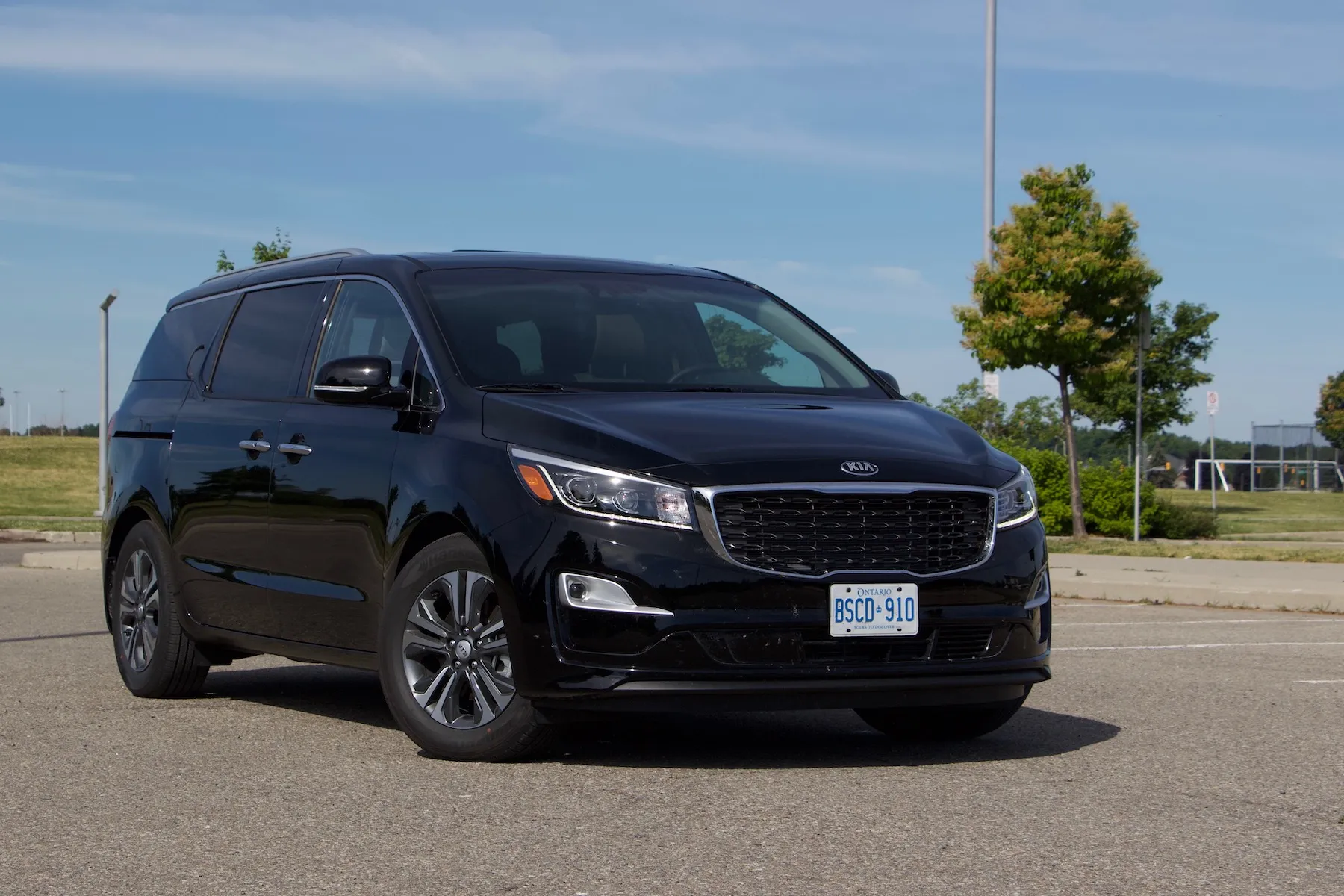
3. Kia Sedona (2015–2018)
Minivans must handle the heavy-duty demands of family life, and the 2015–2018 Kia Sedona fell short in that role despite offering good initial value. At launch, the Sedona was praised for its handsome styling and abundant features, but cracks in its armor began to show as real-world miles accumulated.
One of the most frequently cited complaints from owners involves the Sedona’s suspension system. Components like struts, sway bar links, and control arms wore out prematurely, resulting in excessive body roll, clunks, and a noticeably degraded ride quality. In a vehicle meant for comfort, such issues quickly became frustrating.
The 3.3-liter V6 engine, while reasonably powerful, was not without fault. A number of Sedona owners reported problems related to the cooling system, ranging from water pump failures to inconsistent thermostat performance, which led to overheating and engine stress. In some cases, these issues caused warped cylinder heads and required major repairs.
Additionally, transmission problems emerged over time, particularly in vehicles that had accumulated over 60,000 miles. Symptoms included harsh gear changes, hesitation when accelerating, and even outright failure in a small but concerning number of cases.
Inside the cabin, the Sedona also struggled with long-term durability. While initially spacious and nicely appointed, the interior materials lacked resilience. Seat fabric wore down, plastic panels scratched and faded easily, and multiple owners noted the emergence of rattles from door panels and the dashboard. Sliding doors—both manual and powered—developed alignment problems and squeaks, especially in cold weather.
These problems, while not always catastrophic, combined to create a sense of fragility that undermined the vehicle’s family-friendly intentions. Despite its strong feature list, the Sedona failed to deliver the kind of long-term dependability that parents rely on in a family van.
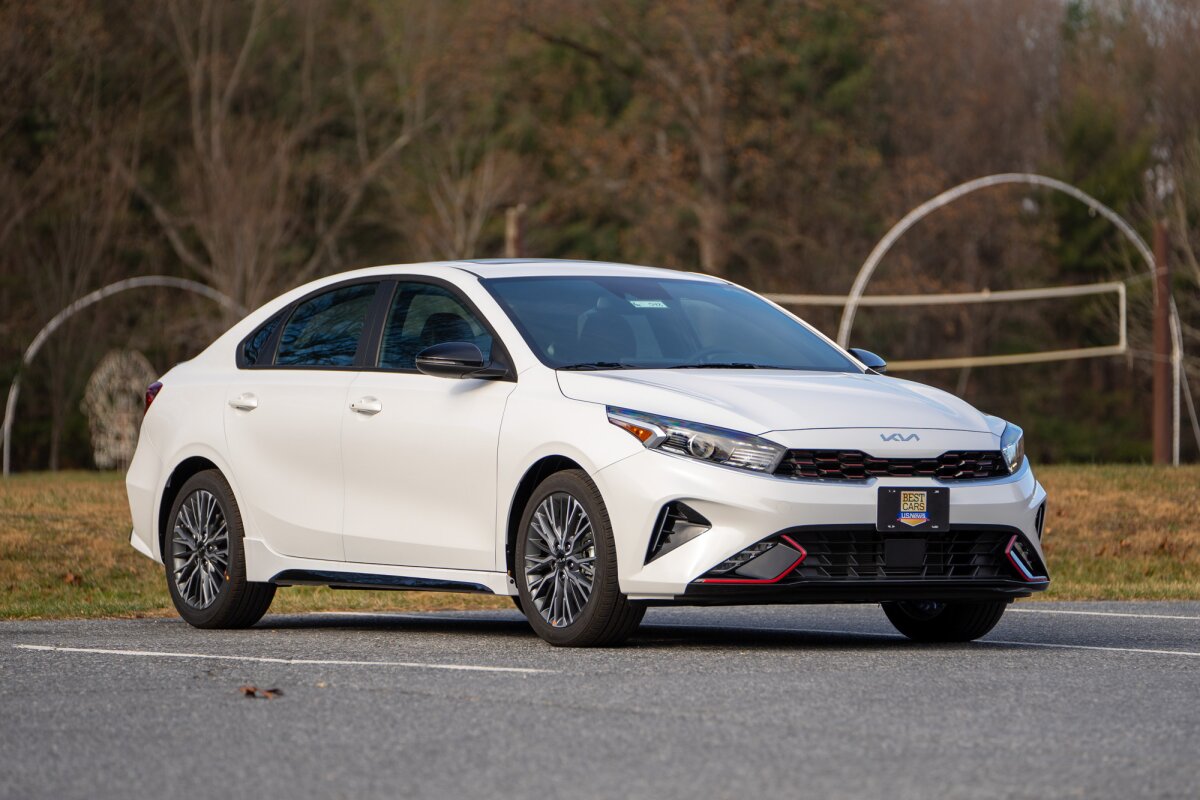
4. Kia Forte (2010–2015)
While newer versions of the Kia Forte have made significant improvements, the early generation, specifically from 2010 to 2015, had a rougher start. During these years, Kia was still solidifying its place in the compact sedan market, and the result was a vehicle that felt underdeveloped in many aspects of reliability.
The interior construction was one of the most prominent pain points. Hard, brittle plastics and poor trim fitment led to widespread complaints about squeaks, rattles, and loose panels, especially in vehicles that had been driven for several years. Even modest mileage often exposed interior wear that should have taken a decade to appear.
The powertrain was another mixed bag. While the engines themselves were generally competent, with 1.8- and 2.0-liter options available, many owners reported issues with engine mounts, leading to vibrations and drivetrain noise within the cabin.
The automatic transmission, particularly in higher-mileage models, sometimes exhibited sluggish gear changes and occasional rough shifting. There were also reports of electrical issues affecting instrument clusters and infotainment systems, with flickering screens and faulty sensors causing annoyance rather than confidence in the vehicle’s dependability.
Suspension and steering components wore down relatively quickly, causing premature tire wear, unbalanced ride feel, and knocking noises on uneven surfaces. The cost of fixing these issues, while not exorbitant, added up quickly and eroded the value proposition the Forte initially offered.
Owners looking for a low-cost, high-mileage commuter were often disappointed when minor issues began to stack up. In this generation, the Forte did not yet match the levels of durability offered by competitors like the Toyota Corolla or Honda Civic, making it one of Kia’s less dependable offerings during this period.
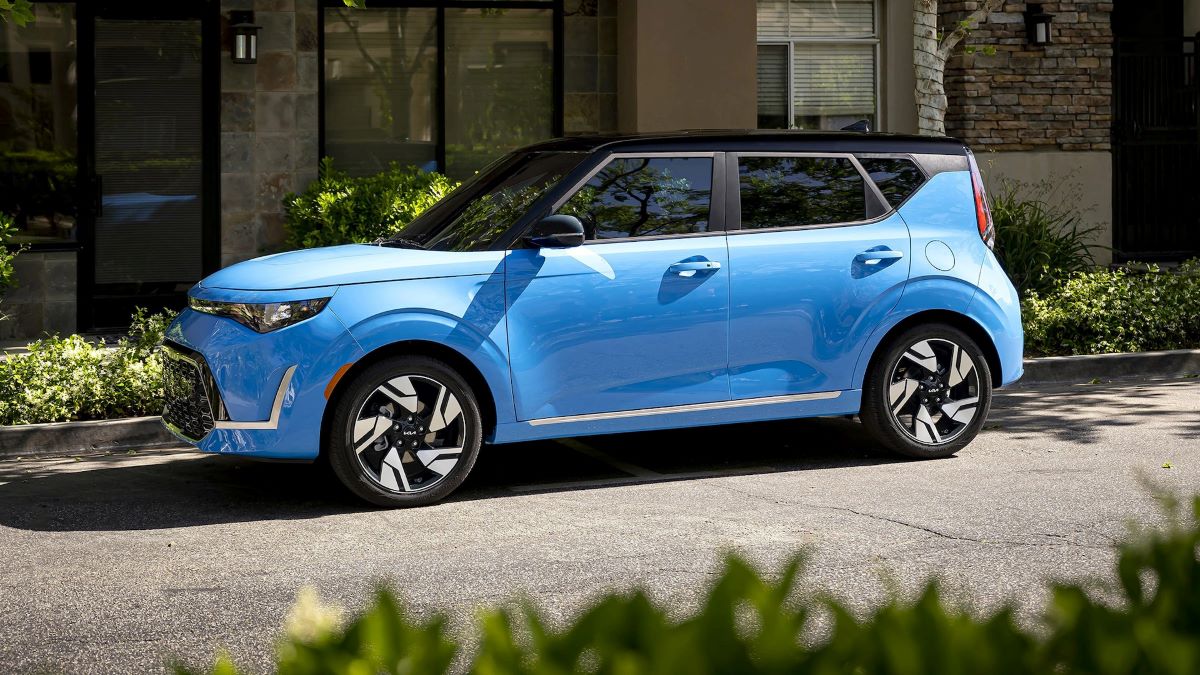
5. Kia Soul (2010–2013)
Although the Soul has become one of Kia’s best-selling and most reliable models in recent years, its earliest versions—particularly from 2010 to 2013—suffered from enough quality issues to tarnish its initial reputation. The first-generation Soul was designed with a young, budget-conscious audience in mind, and while it succeeded in style and practicality, it fell short in terms of build quality and longevity.
A common complaint involved persistent interior rattles, squeaks, and loose trim pieces. The vehicle’s unique upright shape and large cabin meant more surface area and panels to secure, and unfortunately, the materials used in this generation were often subpar. Over time, these materials wore down, shifted, and began to make driving noisier and less comfortable.
Under the hood, the Soul featured a 1.6- or 2.0-liter engine, which, while generally reliable, was sometimes paired with transmissions that showed early signs of wear. Some owners experienced erratic shifting, and in rare cases, full transmission replacements were needed under warranty.
Engine mounts were also prone to failure, contributing to the vibration problems felt throughout the vehicle. Additionally, early Souls often had underwhelming suspension systems. Worn shocks and struts, along with clunky sway bar links, became common complaints within the first few years of ownership, especially in vehicles that faced rough urban roads.
Electrical issues were another area where the early Soul struggled. Malfunctions in the infotainment systems, power windows, and even headlight circuitry were not uncommon. These faults, while often minor on their own, contributed to a sense of unreliability.
Despite its fun image and convenient hatchback layout, the early Soul felt underdeveloped and prone to annoying flaws. Thankfully, later generations improved significantly, but for those early adopters, the first-gen Soul remains a reminder of Kia’s growing pains as it transitioned toward becoming a serious contender in the global market.
Also Read: 5 Cars With Fake Reliability Ratings and 5 That Deserve the Hype
Kia’s automotive evolution tells a story of grit, reinvention, and ambition—but it also offers a study in contrasts. The brand has seen meteoric improvements in design and manufacturing, and today’s top-tier models stand proudly alongside competitors that once dwarfed them in both prestige and reliability. Vehicles like the Telluride, Forte, and Stinger not only surprised consumers but helped redefine what buyers expect from a “budget” brand.
These cars were engineered with purpose, quality, and longevity in mind. They didn’t just meet the minimum bar of reliability—they exceeded it, earning praise from both industry experts and everyday drivers alike. For many buyers, these models represent tremendous value and peace of mind, showing just how far Kia has come.
But to truly appreciate where Kia is today, one must also understand where it stumbled. Models like the early Rio, first-generation Soul, and the 2011–2015 Optima highlight the inconsistencies that plagued Kia during its growth years.
While these vehicles may have been attractive at the time of purchase, offering sleek looks, competitive pricing, and solid feature lists, their aging process revealed underlying weaknesses in engineering and build quality.
From fragile interior materials to chronic drivetrain issues, these Kias struggled to go the distance. In many cases, what appeared to be a savvy financial decision up front ended up costing more in repairs, frustration, and decreased resale value.
These underperforming models serve as cautionary tales and underline the importance of researching specific model years rather than relying on brand-wide reputation. Kia, like many automakers, has vehicles that defy expectations, both positively and negatively.
And while it’s tempting to assume a brand has “figured it all out” based on its current lineup, the reality is that progress is rarely linear. Even the most well-respected brands have their problem children, and Kia is no exception. A badge alone doesn’t guarantee reliability; it’s the engineering beneath the surface and the consistency of production quality that truly matter.
Still, there’s no denying the momentum Kia has built. The company has learned from its earlier missteps, using consumer feedback, real-world data, and internal benchmarking to drastically improve reliability across newer generations. It’s not just about making cars that last—Kia is now focused on making cars that owners genuinely enjoy living with for years.
That shift in philosophy is evident in how well their newer models have held up, how few complaints they generate, and how often they’re recommended by mechanics and reviewers alike.
In the end, Kia’s story is one of transformation, but with lingering reminders that no evolution is perfect. The brand deserves recognition for the vehicles that over-deliver, yet buyers should remain vigilant about models that still carry reliability baggage.
Whether you’re in the market for a used Kia or simply tracking the progress of a once-overlooked brand, knowing which models are battle-tested and which still need refinement is key. Kia’s journey is ongoing, and the divide between the cars that shine and those that struggle is a vital part of understanding where the automaker has been—and where it’s headed.

